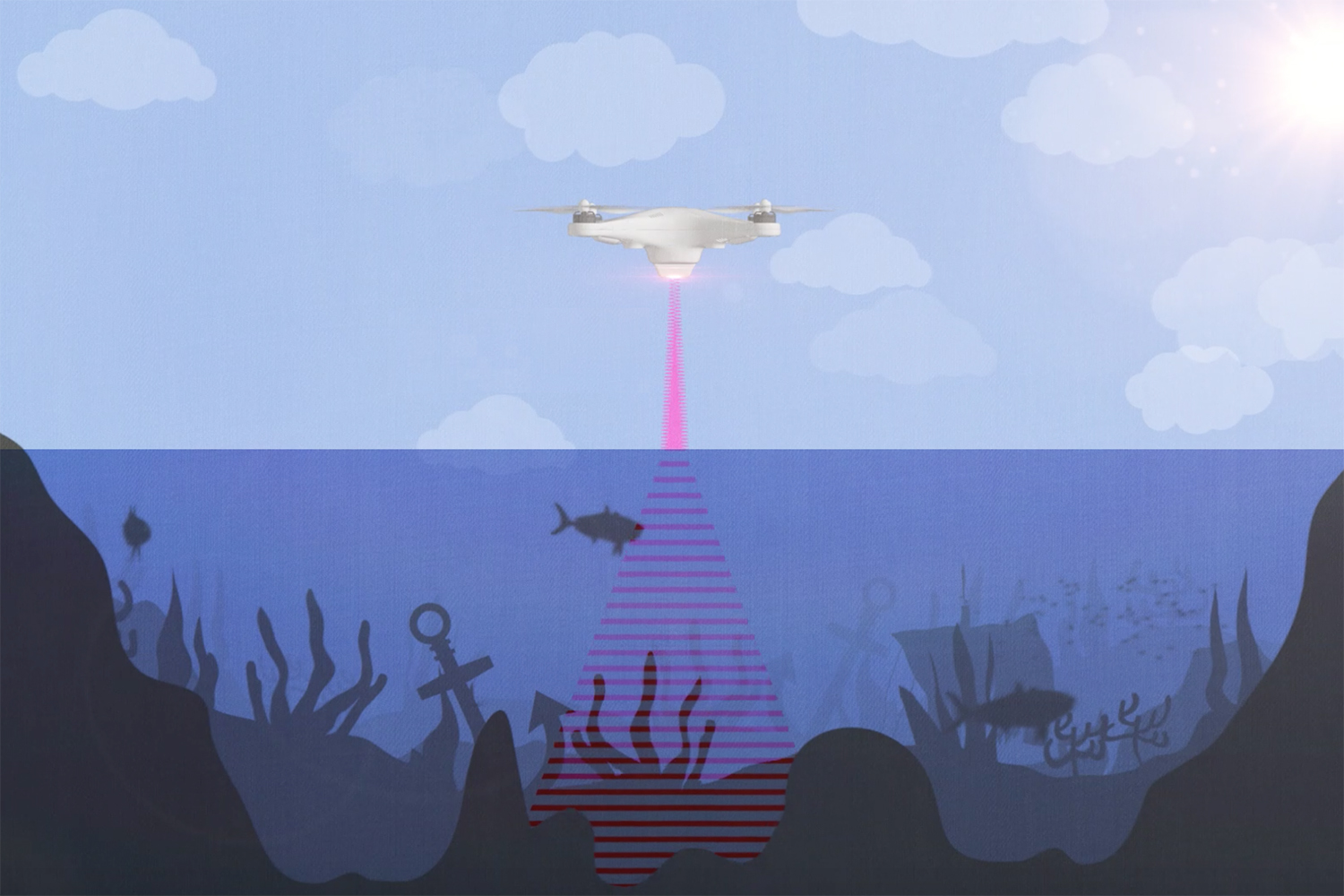Combining sound and light to see underwater
2. 12. 2020 | Stanford University | www.stanford.edu
Stanford University engineers have developed an airborne method for imaging underwater objects by combining light and sound to break through the seemingly impassable barrier at the interface of air and water.
The researchers envision their hybrid optical-acoustic system one day being used to conduct drone-based biological marine surveys from the air, carry out large-scale aerial searches of sunken ships and planes, and map the ocean depths with a similar speed and level of detail as Earth’s landscapes.

Photoacoustic Airborne Sonar System (PASS) combines light and sound to break through the air-water interface. The idea for it stemmed from another project that used microwaves to perform “non-contact” imaging and characterization of underground plant roots. Some of PASS’s instruments were initially designed for that purpose. The system first fires a laser from the air that gets absorbed at the water surface. When the laser is absorbed, it generates ultrasound waves that propagate down through the water column and reflect off underwater objects before racing back toward the surface.
Read more at Stanford University
Image Credit: Kindea Labs
-jk-




